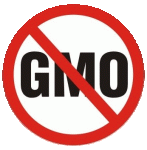 The gospel of high-tech, genetically modified (GM) crops is not sounding quite so sweet in the land of the converted.
The gospel of high-tech, genetically modified (GM) crops is not sounding quite so sweet in the land of the converted.
An old nemesis, the evil pigweed, is chomping its way across Sunbelt states, transforming cotton and soybean plots into weed battlefields. This so-called superweed isn’t the first and surely won’t be the last. Nature has a way of outlasting even the best of man’s inventions.
In population dynamics, which has been studied at least since Gregor Mendel studied the traits of peas, we know that species adjust through natural selection. This works with plants that are engineered as well. They don’t lose the ability to adapt just because there are foreign genes spliced into their genetic code. They continue to adapt and so far are keeping the very traits that are spliced into them thus creating weeds that can’t be controlled by the present suite of chemicals. This will drive the next generation of herbicide and pesticide development.
A farmer friend, who was once a pesticide industry researcher, told me that he switched into organic farming when he realized that the pesticide industry’s business model is designed to keep farmers hooked. Consider the cycle:
- Company makes pesticide/herbicide,
- Pesticide/herbicide is used until plants or pests develop resistance,
- Farmer needs more chemicals or different chemicals,
- Company obliges,
- … and repeat.
Meanwhile homeowners, convinced by ads of what they need to do to have a perfect lawn, use pesticides and herbicides without regulation and often to excess. This adds to the likelihood that resistance will develop, making the general public unknowing partners in the evolution of the next superweed.
In late 2004, superweeds resistant to Monsanto’s iconic Roundup herbicide popped up in GM crops in Georgia’s Macon county. Monsanto is the world’s leading producer of Roundup, as well as genetically engineered seeds, and company figures show that nine out of 10 U.S. farmers use Roundup Ready seeds for their soybean crops.
Last year, Southeast Farm Press had a lengthy story about the widespread, growing resistance to glyphosate, the active ingredient in Roundup. Here’s what the agribusiness news site learned from Alan York, a respected weed scientist:
York says we have an ideal recipe for weed resistance in the Southeast. A number of crops may be rotated with cotton. However, from 1996 to 2000, the vast majority of cotton, perhaps as high as 75 percent, was grown as a continuous monoculture. Prior to the dramatic drop in cotton acreage in the Southeast in 2007, Texas, Georgia, Mississippi, Arkansas and North Carolina represented 10-12 million acres of cotton annually. With the exception of Texas, all these states planted 97-99 percent glyphosate-resistant varieties as late as 2006. The end result, York contends is a perfect recipe for disaster, when you factor in growth potential of Palmer amaranth, compared to any of these crops.
It seems ironic that this variety of the first domesticated grain, amaranth, has been relegated to the weed heap. Maybe industrial agriculture needs rethinking.
Filed under: Grist For The Mill | Tagged: Genetically Engineered Crops, Genetically Modified Crops, Glyphosate, GMO, Monsanto, Pigweed, Roundup, Superweed | Leave a comment »





 The gospel of high-tech, genetically modified (GM) crops is not sounding quite so sweet in the land of the converted.
The gospel of high-tech, genetically modified (GM) crops is not sounding quite so sweet in the land of the converted.